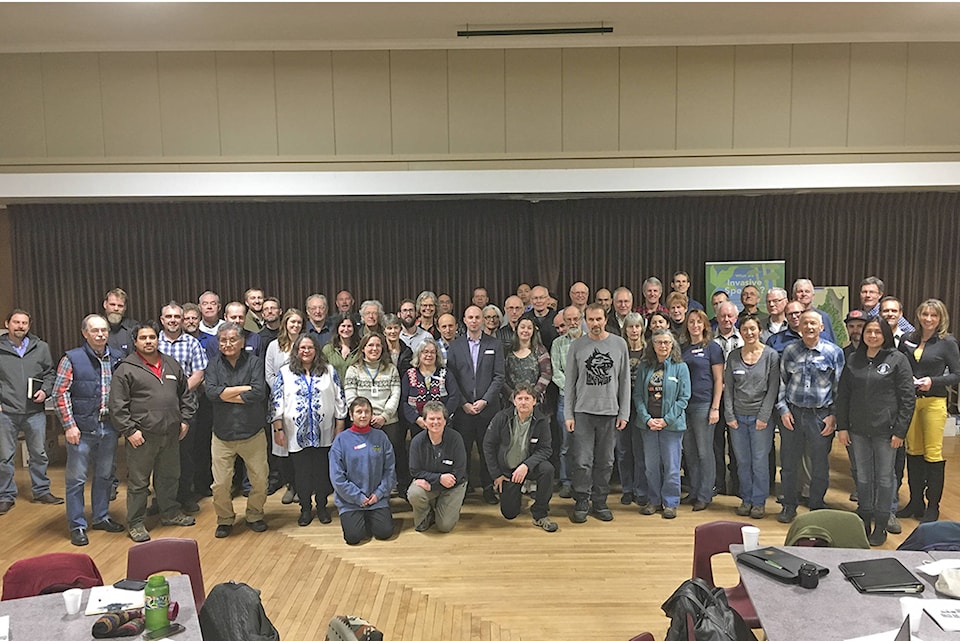The Shuswap’s reputation for working together despite seeming odds and limited resources continues to grow with the latest gathering of the Shuswap Regional Trails Roundtable last Wednesday hosted in Chase.
Provincial leadership at the event acknowledged the gathering is unique in B.C.
Thirty-seven organizations were represented by more than 70 leaders from throughout the Shuswap watershed (as well as representation from organizations in Revelstoke, Armstrong, and Vernon), including leadership from the local Secwepemc, municipal and regional governments, provincial land management agencies, motorized and non-motorized trail stewardship organizations, environmental groups, tourism, economic development, forest industry, community and regional health agencies, transportation, and invasive species.
Neskonlith Chief Judy Wilson opened the gathering by unveiling the Secwepemc flag, reminding everyone of the significance of the meeting’s place within Secwepemc Nation territory, and acknowledging the Shuswap Trails Roundtable was a good start toward reconciliation in its respectful collaboration and recognition of aboriginal title and rights, language and culture.
Related link: Shuswap trail volunteer earns national medal
Presentations included updates on the role the new Secwepemc Indigenous Tourism strategy will have guiding protocol for things like trail signage, naming, interpretation and cumulative effects assessments to better determine our impacts within the environment. Interior Health presented on the role active transportation plays encouraging individual and population health. The Thompson Okanagan Tourism Association provided updates on the support their Indigenous Tourism, Rail-Trail, and BioSphere Sustainable Charter programs can provide for the regional trail initiative.
John Hawkings with Recreation Sites and Trails BC joined the gathering from Victoria, presenting on the current changes to their program, including increased staff support for regional offices, and speculation on where the future of land management planning might be headed. He affirmed the strong community-based collaborative approach the Shuswap Trails Roundtable is growing. BC Parks staff echoed Hawkings noting they recently benefited from new staff support.
The annual day-long roundtable acts as the pivotal point in the year to report on trail projects throughout the region, seek feedback on Shuswap Trail priorities for the following year, and continue to build relationships.
“Ultimately, the roundtable exists to keep searching for ways to improve how we move and manage ourselves in our communities and the wider natural landscape,” said Shuswap Trail Alliance executive director, Phil McIntyre-Paul.
The Shuswap Trail Strategy is founded in a commitment to consider environmental values, Secwepemc values, multiple recreational interests, and collaboration. Four working group meetings provide the collaborative thread throughout the year tying the annual gatherings together. It is coordinated by the Shuswap Trail Alliance on behalf of the partner organizations, with facilitation for the day provided by the Fraser Basin Council.
For more information on the Shuswap Regional Trails Strategy, visit www.shuswaptrailalliance.com.
@SalmonArm
marthawickett@saobserver.net
Like us on Facebook and follow us on Twitter
